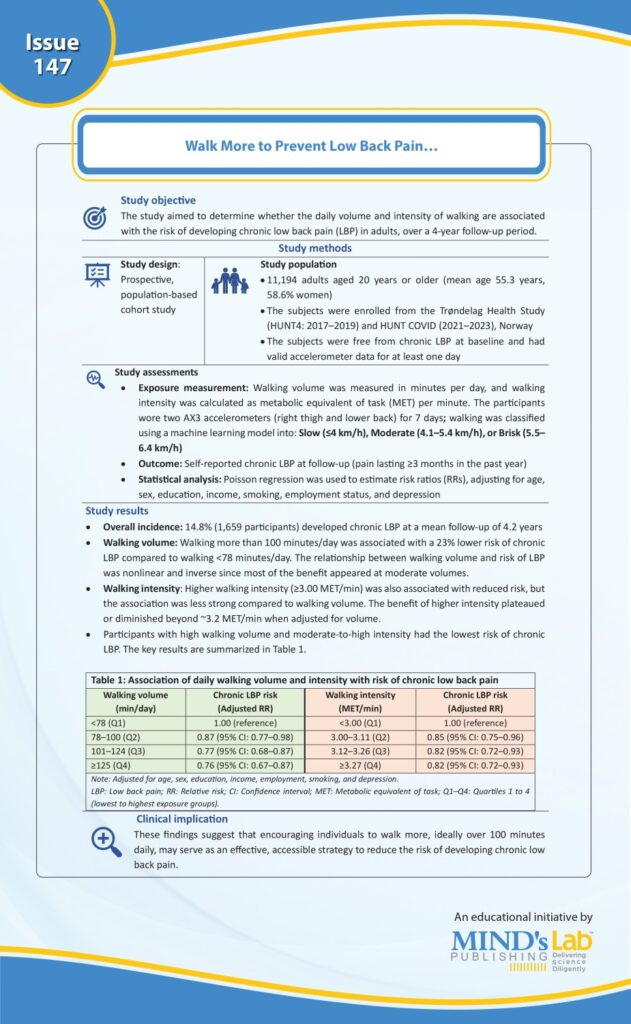
Chronic low back pain (LBP) is one of the most prevalent and burdensome health conditions globally, affecting individuals across all age groups. It is the leading cause of disability worldwide and contributes significantly to healthcare costs and lost productivity.
While clinical guidelines emphasize remaining physically active for those already experiencing chronic LBP, evidence regarding physical activity as a preventive strategy, particularly in the form of walking, is sparse and inconsistent. Walking is the most commonly adopted form of physical activity among adults, and it is known to reduce the risk of various noncommunicable diseases. However, its specific role in preventing the onset of chronic LBP is not clearly understood.
Several randomized controlled trials have demonstrated the benefits of exercise (e.g., strength and flexibility training) in preventing LBP episodes, especially among asymptomatic individuals, but none have isolated the preventive effect of walking alone. Prospective observational studies investigating this link have yielded mixed results, leading to uncertainty about the relationship between walking behavior, especially its volume and intensity, and future risk of chronic LBP
A study published in JAMA aimed to examine the association between daily walking volume and intensity, as objectively measured by accelerometers, and the risk of developing chronic LBP in a large, population-based cohort in Norway. Using data from the Trøndelag Health Study (HUNT4 and HUNT COVID surveys) collected between 2017–2023, the researchers tracked over 11,000 participants who were free from chronic LBP at baseline. It was observed that daily walking volume was inversely and non-linearly associated with the risk of chronic LBP.
By analyzing both the duration (volume) and metabolic intensity (MET/min) of walking, this study uniquely contributes to the understanding of how everyday, habitual movement patterns may protect against the development of chronic LBP. The findings offer valuable insights for public health strategies, clinical recommendations, and future research on the primary prevention of LBP through lifestyle modification (see Graphic).

(Source: Haddadj R, Nordstoga AL, Nilsen TIL, Skarpsno ES, Kongsvold A, Flaaten M, Schipperijn J, Bach K, Mork PJ. Volume and intensity of walking and risk of chronic low back pain. JAMA Network Open. 2025;8(6):e2515592. Doi: 10.1001/jamanetworkopen.2025.15592)
